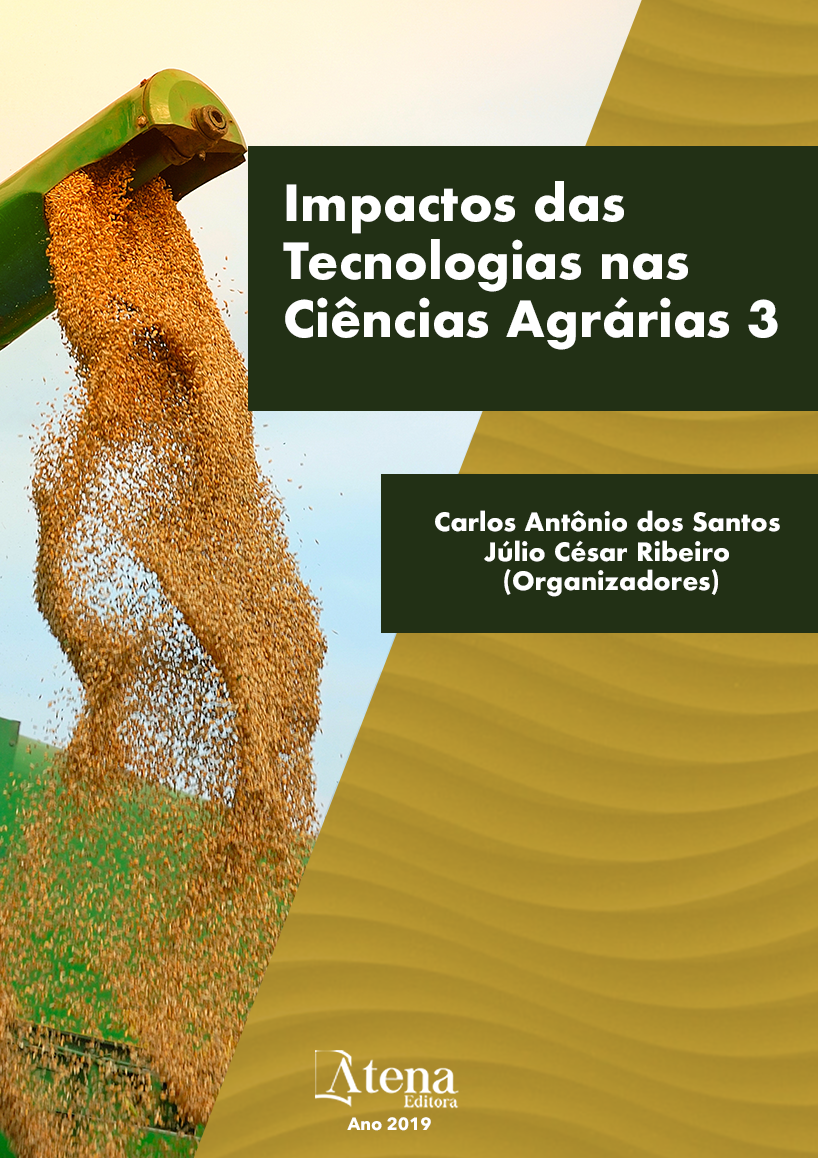
DETERMINAÇÃO DE PLANTIO DIRETO APÓS QUANTIFICAÇÃO DE COBERTURA MORTA ANTES E DEPOIS DO MANEJO
No semiárido brasileiro o uso do
preparo convencional do solo para a produção
agrícola é uma prática quase que unanime,
por motivo das características climáticas da
região o sistema de plantio direto se torna de
difícil consolidação, ainda há o problema de
que o produtor familiar, algo muito comum na
região semiárida, teria a dificuldade de alterar
todo maquinário agrícola, já que são utilizadas
máquinas de portes e estruturas diferentes
nos dois manejos. O preparo convencional potencializa os processos degradativos,
causando impactos negativos, pois o solo se encontra descoberto podendo sofrer com
intemperes. No entanto quando o manejo prioriza a cobertura do solo, inserindo o
sistema de plantio direto, a sustentabilidade aumenta. Portanto, esse trabalho tem
como objetivo estimar o percentual a cobertura do solo em um sistema de plantio
direto no semiárido brasileiro através de imagens aéreas digitais antes e após o
manejo da palhada de interesse. As imagens digitais foram retiradas a uma altura
de aproximadamente 20 m por meio de um Drone avaliando a situação antes e após
a fragmentação realizada com o picador horizontal. A configuração experimental é
de 2 tratamentos e 15 repetições. As porcentagens das áreas com solo descoberto,
palhada e vegetação espontânea foram submetidas à análise de variância e teste
de média, Tukey, ao nível de 5% de probabilidade. Dentre as variáveis analisadas
nos tratamentos apenas o solo descoberto foi estatisticamente igual. A avaliação
do percentual de área coberta por imagens aéreas e o manejo da vegetação foram
suficientes para caracterizar o Sistema Plantio Direto.
DETERMINAÇÃO DE PLANTIO DIRETO APÓS QUANTIFICAÇÃO DE COBERTURA MORTA ANTES E DEPOIS DO MANEJO
-
DOI: 10.22533/at.ed.6141930095
-
Palavras-chave: Imagens aéreas, Rede Neural, Fitomassa
-
Keywords: Aerial imagery, Neural Network, Phytomass
-
Abstract:
In the Brazilian semi-arid the use of conventional soil preparation for
production is an almost unanimous practice, because of the climatic characteristics of
the region the no-tillage system becomes difficult to consolidate, there is still the problem
that the family producer, something very common in the semi-arid region, would have
the difficulty of altering all agricultural machinery, since different loading machines and
structures are used in both managements. The conventional preparation potentiates
the degradation processes, causing negative impacts, since the soil is discovered
and can suffer from untempers. However when management prioritizes soil cover,
inserting the no-tillage system, sustainability increases. Therefore, this work aims to
estimate the percentage of soil cover in a no - tillage system in the Brazilian semi - arid
region through aerial digital images before and after the management of the straw of
interest. The digital images were taken at a height of approximately 20 m by means of
a Drone evaluating the situation before and after the fragmentation performed with the
horizontal chopper. The experimental configuration is 2 treatments and 15 replicates.
The percentages of areas with uncovered soil, straw and spontaneous vegetation were
submitted to analysis of variance and Tukey test, at a 5% probability level. Among the
variables analyzed in the treatments only the uncovered soil was statistically the same.
The evaluation of the percentage of area covered by aerial images and vegetation
management were enough to characterize the Direct Planting System (SPD).
-
Número de páginas: 15
- Igor Apolônio de Oliveira
- Ana Luiza Veras de Souza
- Antônio Diego da Silva Teixeira
- Gleydson de Freitas Silva
- Isaac Alves da Silva Freitas
- Antônio Aldísio Carlos Júnior
- Erllan Tavares Costa Leitão
- Suedemio de Lima Silva
- Ana Beatriz Alves de Araujo
- Priscila Pascali da Costa Bandeira
- Jonatan Levi Ferreira de Medeiros
- Poliana Maria da Costa Bandeira


